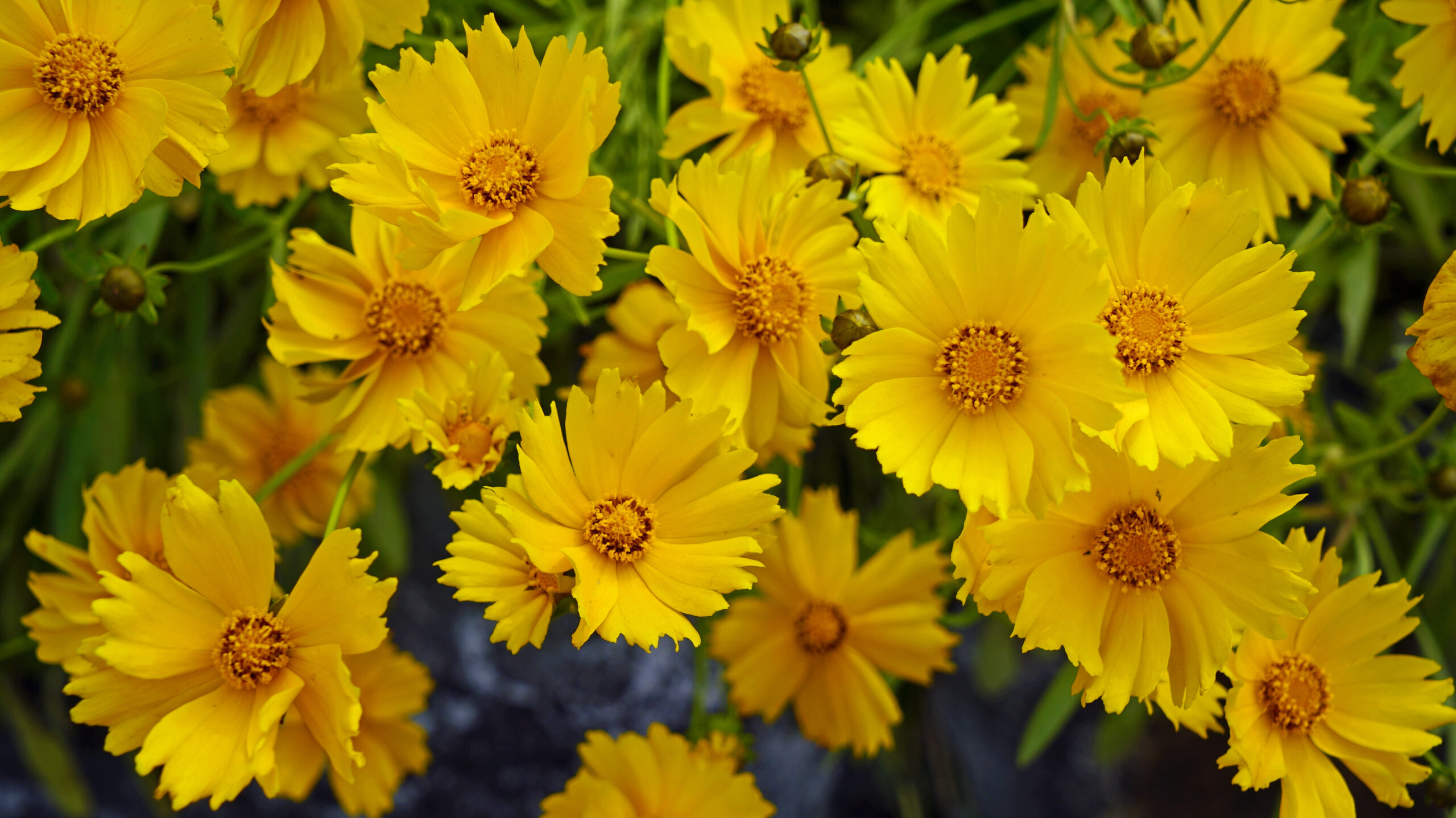Want to grow great tomatoes and peppers on Colorado’s Front Range! Let us show you how…
In the veggie gardening popularity contest, it’s a no-brainer: tomatoes win hands down. There’s just no comparison between the ripe juicy fruit we can pick from our own plants and what passes as tomatoes from the produce aisle at the store.
Growing tomatoes along Colorado’s Front Range can be challenging, but a little extra T.L.C. goes a long way towards making your tomato harvest the best it can be.
Let’s start with some tomato-growing tips, then take a look at another home-grown crop nearing the top of the popularity polls: peppers, especially the tangy ones!
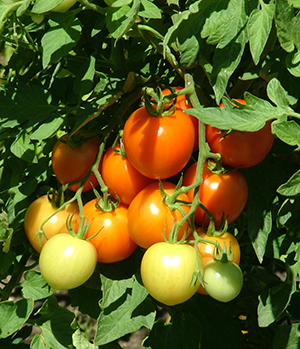 So many choices!
So many choices!
Tagawa Gardens opens the season with more than 100 varieties of tomatoes. It can be a bit dizzying! So here’s a primer on the options you’ll find.
“Determinate” tomatoes condense their harvest into a short period of time…. perhaps four to five weeks, then they’re done. They’re great for people who want to preserve tomatoes or who want a lot of fruit initially, but who also grow other varieties that give a more prolonged harvest.
“Indeterminate” varieties will produce less fruit on a weekly basis but once they start, they keep producing until cold weather kills the plants later in the season. Indeterminates usually get tall enough to require staking or some other kind of support like a tomato cage.
“Hybrid” tomatoes are crosses between two parent plants with desirable traits like flavor, vigor or heavy fruit set. They’re also likely to have increased resistance to disease. Initials like VFTN on the plant label indicate specific disease resistance that has been bred into that strain.
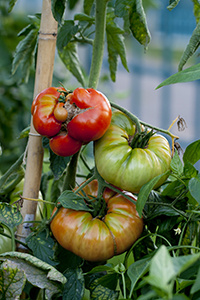
“Days to harvest” indicates about how long that tomato plant will take from the time you plant it until it begins to produce fruit. And those need to be “growing days.” Cool, cloudy days may not count or could delay production.
Early-season varieties take from 55 to 70 days. “Bush Early Girl” and “Fourth of July” are two popular early-season tomatoes.
Mid-season varieties include “Champion,” “Celebrity,” “Big Girl” and “Brandywine,” among many others. Expect them to need 70 to 80 growing days.
Late-season varieties take up to 90 days to harvest from transplant. The big beefsteak tomatoes are usually in this group.
 Pots or Garden?
Pots or Garden?
To help you decide which type of tomatoes to grow, consider whether you will grow them in pots or directly in your garden. Pots need to be at least 14” in diameter–look at the mature height on the tomato info tag and words like “Bush” or “Patio” in the description—smaller height is better for tomatoes in container. In the ground, taller sizes will work. Soil is key in either case—in pots, we like “Greenfields” Roots Organics by Aurora Innovations. Or in the ground, be sure to composted organic amendments into your existing soil, or in raised beds, consider Richlawn®’s new Raised Bed Mix.
Bring on the warm weather and sunshine
Tomatoes (and peppers) depend on warm temperatures to grow and set flowers that ripen into fruit. Temps below 50* and above 90* can stress the plants and damage the blossoms.
Early in the season, protect the plants against chilly nights with shelters like Walls o’ Water. While the plants need an absolute minimum of six hours of full sun daily, they’ll welcome anything that can offer a little shade during the hottest part of the afternoon, especially when the plants are young.
Not too wet and not too dry
Consistent moisture is critical, whether you’re growing tomatoes in beds or in pots. “Blossom end rot” (B.E.T) is one of the most common problems with tomatoes. It appears as a dry, leather-like patch at the base of the fruit. It can occur in peppers and eggplant, too.
B.E.T. is a sign of inconsistent watering, usually indicating that the plants got too dry, although over-watering can cause the condition, too. Water your tomato plants well once the top few inches of soil has dried out. It’s best to use a watering wand or soaker hose right at the base of the plant, keeping the leaves as dry as possible.
Mulch is a tomato plant’s friend
A lot of tomato diseases are soil-borne, meaning the infectious bacteria or fungi are present in the soil. These diseases can spread when water splashes from the soil onto the lower leaves of the plant.
A layer of mulch around the base of the plant is helpful in a lot of ways. I use a few inches of straw laid under the plants, from the stem out to the tips of the leaves. The mulch can help keep the diseases organisms from splashing onto the plant. Once your tomatoes are two- to three-feet tall and have plenty of foliage, remove those lower leaves to give the plant even more protection.
Mulch is also helps keep the soil more evenly moist between watering so that blossom end rot is less likely. And it keeps weeds at bay, too. Good stuff!
Fertilizer… a little bit can go a long way
Tomatoes are considered to be “heavy feeders.” They like good nutrition. But don’t be tempted to over-feed your plants any more than you would stuff yourself with vitamin and mineral pills your body can’t use.
Tagawa Gardens carries a wide variety of fertilizers that are well-suited for Colorado tomato crops. My own choice is to use a tablespoon of fish emulsion in a gallon of water applied to the foliage once a week. The plants also seem to appreciate liquid kelp applied at the same rate every month. I generally stop fertilizing altogether in mid-August so the plants put their energy into ripening the fruit rather than continuing to grow more foliage.
If you have any questions about other fertilizer choices, the staff at Tagawa’s will be happy to help.
Pests and other problems
A variety of insects and diseases can attack tomato plants, but Tagawa Gardens has lots of options to help you fight back.
We’d urge you to bring a sample of the affected plant or the suspected insect culprit in a zip sealed bag to our plant experts at Dick’s Corner for diagnosis and advice. As always, cell phone pictures (especially close-ups!) are a big help, too.
Reminder: All of these growing recommendations will apply not only to tomatoes, but to peppers and eggplant as well, since they’re all in the same family.
 And speaking of peppers…..
And speaking of peppers…..
Our Annuals Staff at Tagawa’s is seeing a lot of interest in home-grown peppers that are on the spicy side of the taste spectrum…. sometimes the very spicy side. Our selection of pepper varieties just keeps growing every season!
We still offer a wide variety of milder peppers that won’t make so much as a blip on the heat radar. “Fooled You” pepper looks and tastes like a jalapeno, without the heat. “Shishito” peppers are labeled as “sweet… most of the time.” They’re especially good for roasting, pan frying and grilling.
At the absolute opposite end of the scale…. and only for the daring… you’ll find “Ghost” peppers. For context, sweet peppers have zero “Scoville units,” the measure of the pepper’s heat. Jalapeno’s average 5,000 to 7,000 Scoville units. Ghost peppers have one-million. (Grow with caution around kids and pets!)
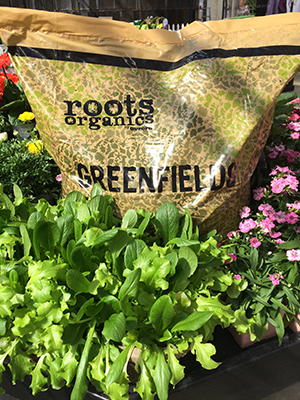 Pots or Garden?
Pots or Garden?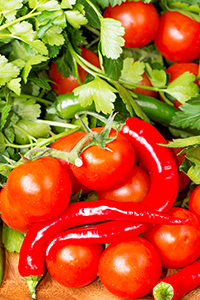 And speaking of peppers…..
And speaking of peppers…..


